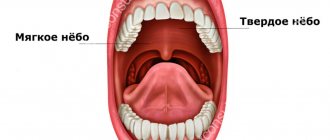A bump on the face is always unpleasant and not very aesthetically pleasing. Read the article for what to do.
Lumps or lumps on the body can either be painful or painless. They can also have different localizations on the body: on the head, face, limbs, back, neck, and groin area.
Read another article on our website on the topic: “Sick, large lump on the top, bottom of the foot . You will learn why it appeared, what types there are, which doctor to contact, what diagnosis is prescribed, and how to treat it.
The appearance of a lump can be associated both with mechanical damage to the skin, for example, after an injury or bruise, and with a violation of metabolic processes in the body; it can also be associated with the transition of a chronic disease to an acute form. It is especially unpleasant when bumps appear on the face. This article describes the causes of such a neoplasm, as well as how to treat it. Read on.
Why do bumps appear on the face: reasons
Lumps on the face
If any lump is detected, you should immediately consult a doctor to rule out malignant neoplasms. With early diagnosis of any pathology, treatment will be much easier.
Signs that indicate you need to see a doctor:
- Deterioration of condition
- Hyperthermia
- Painful sensations
- Inflammation of the skin
- Intoxication of the body
Why do bumps appear on the face? There are a number of reasons why compactions occur:
- Hemangioma
- Increased secretion of sebaceous glands
- Skin fibroma
- Infectious disease
- Papilloma
- Birthmarks
- Skin fibroma
You should also know about the types of such seals. Read on.
Symptoms of cheek cancer
Cheek cancer in the initial stages of the tumor process is asymptomatic. Any ulcer that is not prone to rapid healing and any area of hyperkeratosis should be regarded as an early stage of cancer. In the early stages of cheek malignancy, there is little or no pain. As the size of the cancer tumor increases, the following symptoms appear:
- Pain;
- Induration and infiltration of underlying tissues;
- Enlargement of regional lymph nodes, including damage to the lymph nodes of the submandibular triangle, jugular-digastric group and deep cervical lymph nodes.
What does cheek cancer look like? Any non-healing oral mucosal ulcer should be assessed as a potentially malignant tumor and consultation with an oncologist should be sought.
Types of bumps on the face and neck
The doctor can almost always determine the type of lump - visually or by touch. Sometimes a more in-depth diagnosis may be needed. There are several common types of bumps on the face and neck:
- Lipomas
- Hygromas
- Atheromas
- Enlarged lymph nodes
- Prosyanka
- Abscess
- Hernia
- Malignant neoplasms
Let's take a closer look at each type:
Lipoma - a lump on the face
- Lipomas
Lipomas are most common in cosmetology and medicine. People call them wen. These are benign neoplasms that originate from adipose tissue. There are both individually growing and entire colonies. People with diabetes, pathologies of the liver, pancreas, urinary system, hormonal disorders, as well as people with alcohol addiction often suffer from lipomas. It is possible that lipoma is inherited, that is, it is fixed genetically.
Most often, lipoma appears in women aged 30 to 40 years. Hard subcutaneous balls that do not cause pain, but can grow.
Hygroma - a lump on the face
- Hygromas
Such seals are also called synovial cysts. This is a benign neoplasm that is filled with serous-mucous or serous-fibrous fluid. This seal can occur after an injury, due to a genetic factor, or as a complication after surgery on the hand.
Again, hygroma develops 3 times than in men. Hygroma can be painful; it can be either sharp or dull pain. However, in almost half of the cases this thickening does not cause pain.
Atheroma - a lump on the face
- Atheromas
This benign neoplasm, which has a round shape, consists of a capsule containing a white-yellow liquid. Atheroma develops in rare cases; it is diagnosed in 5-10% of people.
Atheromas can be both true and false. True ones originate in microparticles of the epidermis of the skin with a genetic predisposition, and false ones are formed at the site of blockage of the sebaceous ducts of the gland, where secretions accumulate. This neoplasm can occur in people with impaired metabolism in the body, in harmful environmental conditions, or in hormonal imbalances.
Enlarged lymph nodes - bump on the face
- Enlarged lymph nodes
Enlarged lymph nodes of various locations may indicate the presence of an infectious process in the body. A wound or scratch may be found near the enlarged lymph node. If after treatment the lymph node has not decreased, but on the contrary there is pain, then you should consult a specialist.
Prosyanka - bumps on the face
- Prosyanka
This is a benign neoplasm, which is characterized by the appearance of many small white lumps on the skin. They can be both local and widespread. A common cause is the retention of sebaceous gland secretions due to improper skin care. Millet rash can occur even in newborn babies, but after a while they go away on their own without leaving a trace.
Abscess - lump on the face
- Abscess
It is painful, has redness, local hyperthermia, and inflammation of the skin area. The reasons are injuries, impacts, any mechanical damage, injections. If there is an abscess, you should immediately contact a specialist so that the source of inflammation does not progress.
Hernia - a lump on the face
- Hernia
This neoplasm causes discomfort due to pain, and nausea and vomiting may also occur. A hernia can develop in the navel, groin, thighs and other places. There are many reasons for the development, the most common of which are: pregnancy and childbirth, constipation, mechanical damage, heavy lifting, lung diseases, injuries to the musculoskeletal system, including the spine.
Melanoma - a bump on the face
- Malignant tumors
These are the most insidious neoplasms, since they are asymptomatic for a long time. And symptoms appear only in the later stages, when the tumor reaches a large size. Urgent consultation with a specialist and surgical intervention are required.
The danger of atheroma on the face
Sebum and keratin masses accumulated in the atheroma capsule have a cheesy consistency. This is a favorable environment for the development of bacteria. An attempt to squeeze out the atheroma can lead to infection getting inside the capsule and causing suppuration. The main symptoms of its onset are:
- redness of the skin around the atheroma;
- pain in the affected area;
- Migraine-like headaches;
- temperature increase.
Inflamed atheroma can lead to phlegmon - inflammation of adjacent tissues without precise boundaries.
Rice. 3 Self-squeezing of atheroma usually leads to inflammation of facial tissues
Lump on the face after a blow: what is it, reasons
A lump, or otherwise hematoma, appears after a blow if the integrity of the blood vessels located in the subcutaneous tissue is disrupted. As a result, blood flows out, forming swelling and redness. This is the main reason.
The lump causes discomfort, in addition to the fact that it causes pain, it is also an aesthetic defect on the face. It is necessary to immediately apply a cold object, such as ice, to the site of impact, as cold accelerates blood clotting. You can hold it for 10-15 minutes - no longer to avoid frostbite of the skin.
White bump on the face: what is it, reasons
Perhaps you have ever noticed tiny white bumps on your face, which are most often found in the area of the eyes, nose, and cheeks. These seals are called milia. They are filled with keratin inside and appear without any reason, but the contributing factors or causes are:
- Rosacea disease
- Traumatization of the skin
- Sunburn
- Clogged enlarged pores
Milia are not harmful to the body because they are made up of dead epidermal cells located under the skin. But they are an aesthetic defect that can be easily eliminated with the help of a cosmetologist.
Purulent bumps on the face: what is it?
Inflamed pimples are purulent bumps on the face with a white head, sometimes they are painful; serous secretions can accumulate in such heads. Pus occurs because, in response to bacteria that have entered a pore or wound in the skin of the face, the immune system begins to attack so that they do not penetrate deeper and spread throughout the body. The immune system begins to activate white blood cells that fight bacteria. This process is called phagocytosis. White blood cells devour bacteria and die themselves. Serous secretion is an accumulation of dead leukocytes.
Under no circumstances should a purulent pimple be squeezed out, as a scar or scar may remain on the delicate skin, and the infection can also enter the body back into the body. Wait until the pimple “ripens” itself and the pus comes out on its own. To speed up “ripening”, use drying ointments.
The mechanism of development of cheek cancer
Malignant tumors of the cheek occur against the background of precancerous changes in the epithelial and subepithelial layers (leukoplakia or erythroplakia). The risk of leukoplakia degenerating into invasive cheek cancer is about 4-6%, with erythroplakia it reaches 30%. Subsequently, dysplasia transforms into “cancer in situ”, which penetrates into surrounding tissues and metastasizes to local and regional lymph nodes.
In some patients, even those cells that do not initially raise suspicion of dysplasia upon initial microscopy may gradually become malignant. As the tumor process progresses, distant metastases occur in the bones, lungs, and liver. Buccal cancer can grow through the skin.
Swelling of the face with bumps
Swelling of the face with bumps
This could be angioedema or Quincke's edema - an allergic reaction when the skin swells, swells, and increases in size. The mucous membranes may also swell. Itching and burning occurs. This is an acute reaction of the body, which is associated with the work of mast cells; allergies can be caused by any factors:
- Food
- Poison
- Medicines
- Pollen, etc.
At the first symptoms of angioedema, you need to immediately call an ambulance, do not panic, provide an influx of fresh air, take antihistamines, try to eliminate the factor that caused the allergy:
- For pollen allergies - wash your face and nasal passages
- If an insect bites you, remove the sting
- If you have a dust allergy, go to a damp room or outside
Drinking plenty of alkaline fluid when your face is swollen with bumps will help speed up the removal of the allergen from the body. Apply a cold bandage to the swollen area to reduce swelling, wait for the ambulance to arrive.
Diagnostics: if a lump comes out, inflammation appears on the face
To diagnose a lipoma, a specialist conducts an interview in the form of a survey, then proceeds to examine and palpate the lesion. And also used:
- Ultrasound examination (ultrasound)
- Magnetic resonance imaging (MRI)
- Electroradiography (ERG)
- Computed tomography (CT)
They help to detect places of enlightenment that should not normally be there. What other types of diagnostics are used if a lump comes out or inflammation appears on the face?
Hygroma detection is facilitated by:
- Ultrasound examination (ultrasound)
- Radiography
- Taking a puncture from a hygroma
To differentiate the diagnosis of hygroma from a hernia, the specialist prescribes diaphanoscopy. Other methods are also used to diagnose skin tumors:
- MRI (magnetic resonance imaging)
- Ultrasound (ultrasound examination)
- Duplex scanning
- Computer topography of the spine
- Computer electroencephalography
- Check-up (comprehensive examination of the body)
Who should I contact if I notice problems on my face in the form of a lump? Read on.
Which doctor should I contact if a lump grows on my face?
If a lump grows on your face, you need to contact a therapist.
If you notice that a lump is growing on your face or some other new growth has appeared on the skin, first make an appointment with a therapist. When you contact this doctor, he will examine the lump and find out the reasons for its occurrence. Here are two outcomes:
- The doctor independently prescribes treatment if he is confident in the diagnosis and its treatment
- Refers you to the right specialist
Lumps on the face are examined by a radiologist, neurologist or chiropractor.
Treatment for cheek cancer
Malignant tumors are successfully cured using radical radiation therapy while preserving the function of the oral cavity. Radiologists implant radiation sources because it is possible to irradiate a small volume of tissue at a high dose. Radioactive isotopes of cesium, gold, radium, iridium, tantalum, which have the same efficiency, are used as sources.
For small tumors, the size of which does not exceed 1 cm, they are limited to implantation of a radiation source, without resorting to additional external influence. In cases of slightly larger tumors that are not suitable in size for implantation, external irradiation is used along with source implantation.
Traditionally, large cheek tumors are treated with external beam radiation. Recently, oncologists have been using a combination of radiation and chemotherapy. Mobile lymph nodes are radically excised. During prophylactic removal of lymph nodes without signs of damage, in a significant number of cases, foci of micrometastasis are found in them. For this reason, radiologists prefer to perform prophylactic irradiation of the neck in patients without evidence of lymph node involvement by the external beam, sometimes in combination with surgical treatment.
After surgery for cheek cancer, a cosmetic defect is formed. The results of surgical intervention are improved using the technique of microvascular free skin grafting. If a patient develops dry mouth after radiation therapy, he is prescribed oral pilocarpine. The drug increases salivation, which is usually accompanied by minor side effects - sweating and increased urination. For primary or secondary treatment of tumors of the buccal mucosa, patients are prescribed chemotherapy drugs.
Early diagnosis of a cheek tumor allows for effective treatment. If the tumor process is at a late stage, the prognosis worsens. If you experience unpleasant sensations in the oral cavity or identify ulcers of the buccal mucosa, undergo an examination at the clinic by calling the Yusupov Hospital.
Lumps after acne on the face: how to get rid of them?
Bumps after acne on the face
It often happens that after inflamed acne, a scar or bump remains on the face. How to get rid of it? If it does not resolve for a long time, you need to contact a dermatologist who will select a set of hardware procedures:
- Micromassage with ultrasound , which will help clean pores, smooth out wrinkles, improve blood circulation, even out facial tone and remove acne formations.
- Chemical peeling is done in a course. Excellent for removing the top layers of skin. Peeling can be superficial, medium and deep. The dermatologist himself will select the appropriate option.
- Laser dermabrasion is a very effective method, indicated for advanced cases when other methods cannot cope with aesthetic defects of the face.
The doctor may also prescribe some cleansing creams or ointments, traditional medicine methods and other additional treatment options.
Preventing the formation of bumps on the face under the skin and on the skin
Prevention is of great importance when there is a risk of developing any of the pathologies. The same applies to the formation of bumps on the face under the skin and on the skin. To prevent seals from appearing, it is recommended:
- Monitor your diet
- Exercise moderately
- Control your weight
- Avoid skin injury
- Check your health every year
- Lead a healthy lifestyle
Take care of your health and undergo medical examinations in a timely manner. It is also important not to injure the skin, and if there is a genetic predisposition to the appearance of neoplasms on the face, you should consult a doctor at the first signs of pathology.
Causes of cheek cancer
Cancer of the buccal mucosa develops under the influence of the following provoking factors:
- Use of tobacco in any form (cigarettes, cigars, pipes, chewing tobacco);
- Alcohol abuse (the risk of developing cancer increases when the use of alcohol and tobacco is combined);
- Infection with carcinogenic forms of human papillomavirus.
One risk factor is exposure to sunlight. Both family history and genetic predisposition, as well as exposure to mutagenic environmental factors, play a role in the development of cheek cancer. The formation of a malignant tumor occurs in several stages. The most important is the disruption in the functioning of oncogenes and genes that inhibit tumor growth. The development of malignant neoplasms of the cheek is associated with inactivation of the p16 gene, mutations in the p53 gene, and the introduction of the human papillomavirus.











